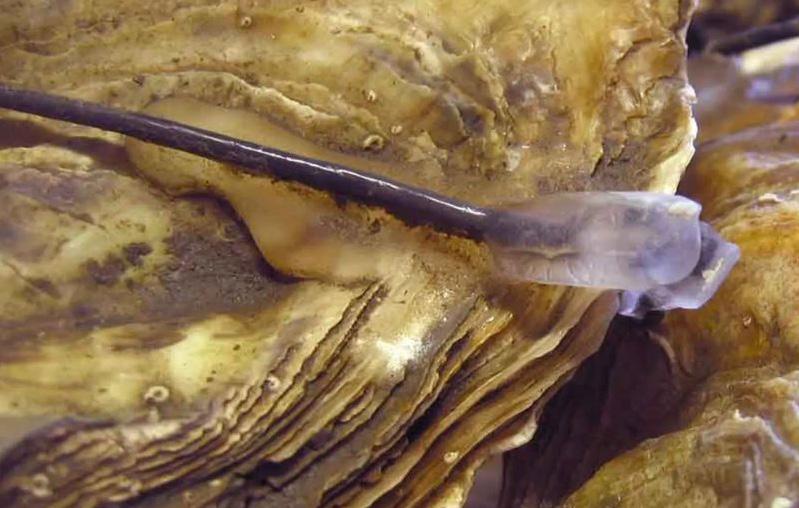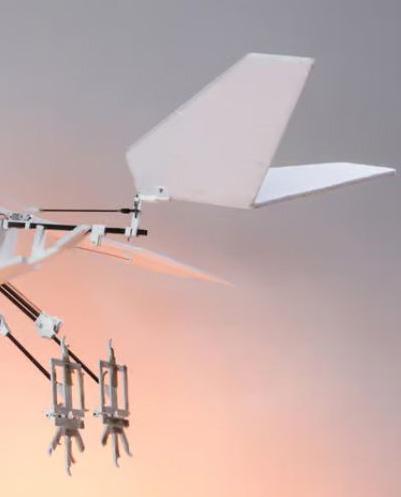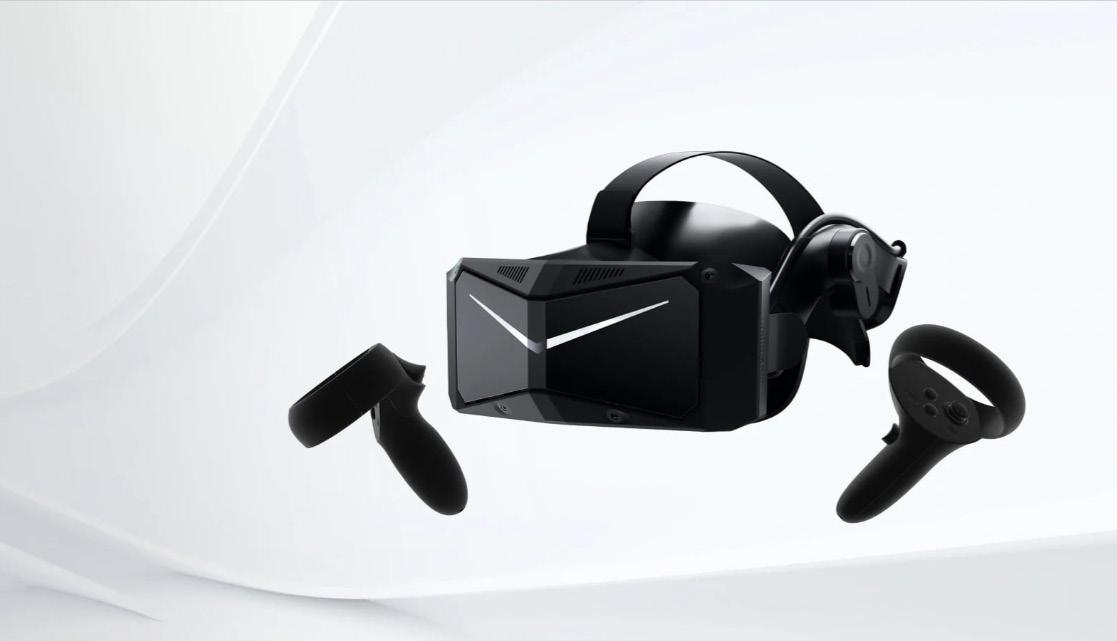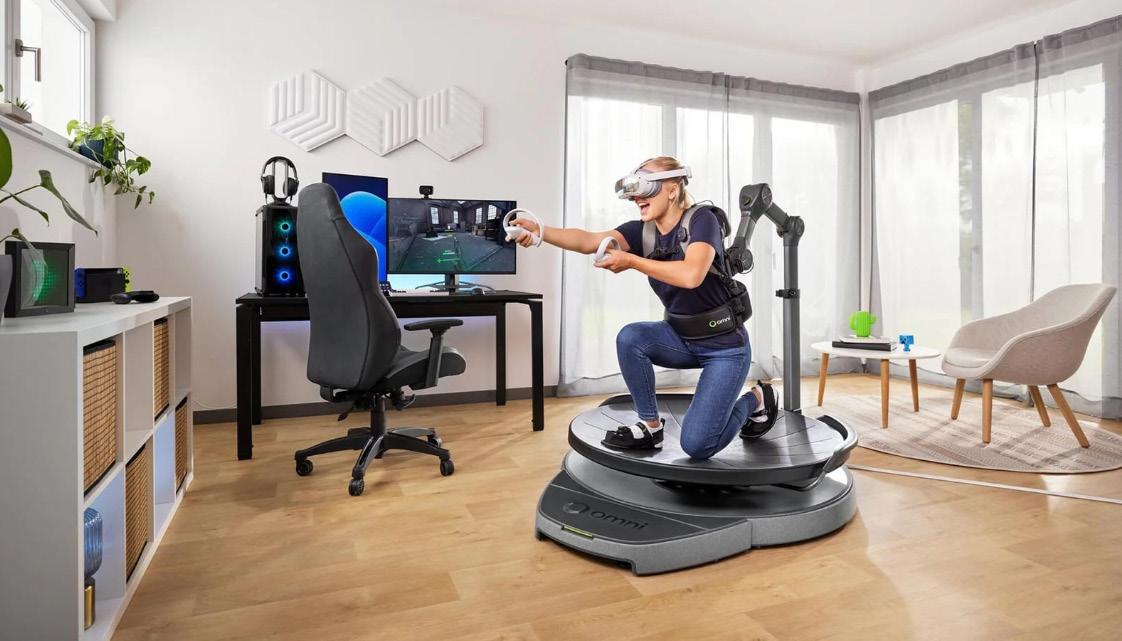
16 minute read
Research Reveals That Sleep Can Improve Decision-Making
Author John Steinbeck once remarked, “It is a common experience that a problem difficult at night is resolved in the morning after the committee of sleep has worked on it.”
Countless individuals have credited their dreams with inspiring breakthroughs and innovations. Modern research into the science of sleep now provides evidence that supports these assertions.
A 2024 study highlights that sleep can enhance our ability to make rational, well-informed decisions and resist being misled by initial impressions. Researchers at Duke University demonstrated this through a garage-sale game experiment.
Participants searched virtual boxes filled mostly with low-value items, but a few contained more valuable objects. After examining several boxes, they were asked to choose their favorite, earning a cash reward based on the total value of its contents.

Sleep Enhances Logical Decision-Making
Those who made their selection immediately often based their decision on the first few items they encountered, neglecting the overall box contents. However, participants who slept before deciding made more logical choices, unaffected by the order of valuable items within the boxes.
When faced with a challenging problem, it can often feel like progress is impossible. However, a 2019 study discovered that providing the sleeping brain with cues— such as sounds linked to an unresolved problem— helped participants solve the problem the following day.
In the experiment, participants attempted a series of puzzles while a unique sound played in the background for each. At the end of the session, researchers collected the puzzles participants couldn’t solve. While the participants slept, the researchers replayed sounds associated with some of the unsolved puzzles. The next morning, participants returned to tackle the puzzles again. They were more successful at solving those linked to the sound cues, indicating that these cues prompted the sleeping brain to work on the problem.
Sleep may aid problem-solving by helping us uncover hidden connections between objects and events. A 2023 study explored this concept.
Sleep Boosts Recognition of Hidden Connections
Participants were asked to learn associations between four items (an animal, a location, an object, and a food) tied to an event described by the researchers. Some pairings were straightforward (e.g., item A directly linked to item B), while others were more subtle (e.g., item D was indirectly connected to items A or C). After a night’s sleep, participants were better at identifying these indirect links—such as the con- nection between items A and D—compared to those who stayed awake. This suggests that sleep enhances our ability to recognize deeper patterns in complex information.
Thomas Edison, a light bulb inventor, used daytime naps to enhance creativity, holding a ball that would drop and wake him as he drifted off. He and others, like Salvador Dalí, believed this twilight state between wakefulness and sleep fueled creative insights.
In 2021, researchers tested this by having participants nap while solving a math problem with a hidden shortcut. Those who reached light sleep were better at finding the shortcut, often experiencing hypnagogia— vivid imagery at sleep onset.
A 2023 study found hypnagogic imagery also enhanced creativity in tree-themed tasks, linking the imagery to better problem-solving. Edison was right—sleep onset is a creative sweet spot.
Fish Can Choose Their Own Birth Timing—Here’s How
Fish embryos in many species can control their hatching timing, effectively selecting their own birthdays. A study from Hebrew University of Jerusalem has uncov-

A zebrafish embryo. (Dr. Deodatta Gajbhiye) ered the chemical and biological processes enabling this precise control, showing how embryos align their hatching with optimal environmental conditions.
Researchers focused on zebrafish (Danio rerio) and discovered that the thyrotropin-releasing hormone (Trh) plays a pivotal role. Released by the embryo, Trh triggers the production of enzymes that dissolve the egg wall, allowing hatching to occur. “Hatching is a critical event in the life history of oviparous species,” the researchers explain. “Timing it with favorable conditions improves survival in early life stages.“
Different fish species use unique strategies for hatching. Zebrafish typically hatch at daylight, clownfish and halibut prefer darkness, and California grunion wait for ocean tides. In zebrafish, Trh is delivered to the hatching gland via a neural circuit that forms just before hatching and disappears shortly after.
Evolutionary Conser-
vation of Trh-Based Hatching Mechanisms Across Species
The researchers also examined medaka (Oryzias latipes), a distantly related species, finding the same Trh-based hatching process despite differences in their biology. This suggests that the mechanism is evolutionarily conserved, even after 200 million years of divergence. Using immunostaining techniques, they observed transient Trh circuits in both species, which vanish after hatching.
While in humans and mammals Trh regulates key functions like heart and metabolic rates, its role in fish hatching highlights its evolutionary adaptability. Understanding these mechanisms further could provide insights into other aquatic species with varied hatching strategies.
Looking ahead, scientists aim to explore how climate change might affect this delicate timing. As temperatures rise, understanding how embryos adapt their hatching decisions— fine-tuned over millions of years—will be crucial for preserving species.
“It would be fascinating to test how conserved Trh’s role is across species and study variations in hatching circuits among those with different strategies,” the researchers note.
Smart Home Gym Features An AI Coach that Monitors Your
For many, daily workouts guided by a personal trainer are an unaffordable luxury. However, the Aeke K1 system offers an AI-coach-assisted workout experience for a onetime cost of just under $2,000.
Now featured on Kickstarter, the K1 boasts a 43-inch vertical 4K touchscreen with builtin surround sound. This screen connects to an electronic base module, which links to a foldable floor platform, creating a seamless workout setup.
Versatile Accessories and Adjustable Resistance
The system comes with a barbell and hand stirrups, both connected via cables to a 750W motor in the base unit. This motor delivers adjustable resistance up to 220 lbs (100 kg) in precise increments of 1 lb (0.5 kg). Additional accessories include a heart-rate-monitoring armband and an ankle belt for tracking lower-body movement.
Advanced Fitness Assessment with Integrated Sensors
The K1 begins with a comprehensive fitness assessment, using an integrated depth-sensing camera, an 8-electrode body fat scale, and other sensors to evaluate cardiovascular endurance, movement patterns, muscle strength, posture, flexibility, and body composition.
Based on this data and personal details like fitness goals, the K1’s AI algorithms create a customized workout plan. Trained by human fitness experts, the AI utilizes over 140 classes—including pilates, cardio boxing, weightlifting, and yoga—that incorporate more than 280 unique body movements.

During workouts, the K1 tracks the user’s body position at seven skeletal points, enabling it to count repetitions and provide real-time audio-visual feedback to correct improper form.
After each workout, the K1 provides a detailed performance report, including metrics such as duration, calories burned, repetitions, sets, and targeted training areas. It also tracks progress and highlights areas to focus on in future sessions.
Weighing approximately 77 kg (170 lbs), the machine supports a maximum user weight of 350 kg (772 lbs) and is easily movable thanks to builtin rubber wheels.
If the Aeke K1 goes into production, a pledge of $1,998 will secure a system without requiring a subscription. The expected retail price is $3,699. A demonstration of the system in action is available in the video below.
Innovative tech harnesses cyborg mollusks to detect water pollution.

Scientists have developed a commercial water-quality monitoring system, molluSCAN-eye, which uses live, electronically enhanced mollusks to detect pollution. Filter-feeding mollusks like oysters and mussels naturally respond to pollutants by altering how they open their shells, making them ideal sensors.
Each molluSCAN-eye unit houses 16 mollusks in a cage submerged at monitoring sites such as ports, sewage outlets, or oil platforms. Electromagnets attached to the mollusks’ shells measure shell movements during feeding, capturing data on opening width, speed, and frequency. These metrics reflect biological rhythms and responses to pollutants.
Advanced HFNI Technology for Real-Time, Cost-Effective Monitoring
The data is processed by a Linux-based microcomputer on-site and transmitted to a cloud server for real-time access via smartphones or tablets. This system’s High-Frequency Non-Invasive Valvometry (HFNI) technology is 10 to 100 times more sensitive and far cheaper than traditional water sensors, requiring minimal maintenance thanks to the mollusks’ self-cleaning behavior.
Currently, 90 units are operational worldwide. The latest version of molluSCAN-eye recently won a CES 2025 Innovation Award, highlighting its groundbreaking approach to pollution monitoring.
Watch: Biomimetic Robo-Bird Takes Flight with a Leap
While autonomous flying robots hold promising potential, their usefulness is limited if they cannot navigate uneven terrain after landing. However, an experimental bio-inspired robot overcomes this limita- tion by mimicking the raven’s gait.
Named RAVEN (Robotic Avian-inspired Vehicle for Multiple Environments), the device was developed by Won Dong Shin and his team at Switzerland’s EPFL university. Although it resembles a flapping-wing robot, RAVEN flies using a combination of semifixed wings and a propeller.

The RAVEN robot in flight, showing off its bird legs © 2024 EPFL/Alain Herzog (CC-BY-SA 4.0)
Innovative Multi-Jointed Legs for Efficient Takeoffs
The robot’s standout feature is its multi-jointed legs, which allow it to move in various ways. Like a real raven, RAVEN can jump to assist its takeoff. Tests demonstrated that this jumping action makes the takeoff process significantly more energy-efficient than a traditional flight launch.
“Multifunctional robot legs expand the poten- tial for deploying traditional fixed-wing aircraft in complex terrains through autonomous takeoffs and multimodal gaits,” the scientists note in their recently published paper in Nature.
Watch RAVEN in action as it walks, hops, jumps, and flies in the video below. While its legs aren’t as anatomically complex as those of a real raven, they replicate the articulated hips, ankles, and feet, enabling the robot to walk, hop over obstacles, and jump onto raised surfaces. Much like a real raven, the robot can perform a jump-assisted takeoff to initiate flight. Tests revealed that this method significantly improves energy efficiency compared to taking off without a jump.

The researchers explain in their recently published study in Nature that “multifunctional robot legs expand the possibilities for deploying traditional fixed-wing aircraft in challenging terrains through autonomous takeoffs and multimodal movement.”
A video below showcases RAVEN’s capabilities, including walking, hopping, jumping, and flying.
A mineral so rare that only one specimen has ever been found in the world exists: kyawthuite (cha-too-ite). This tiny, tawny-hued grain weighs just a third of a gram (1.61 carats), and at first glance, it might resemble amber or topaz. However, its value goes far beyond its appearance.
In 2010, gemologist Kyaw Thu purchased the raw gem at a market in Chaung-gyi, Myanmar, initially mistaking it for scheelite. After faceting the stone, he realized it was unlike anything he had ever seen before. Unable to identify the mineral, Thu sent it to the Gemological Institute of America (GIA) Laboratory in Bangkok, Thailand, where experts linked it to synthetic BiSbO4 – bismuth antimonate – but with a unique formula (Bi3+Sb5+O4), never before found in nature.
“This is the first in the world. It is not found in other countries,” Thu told The Myanmar Times in 2016. “I could tell this stone was unusual and bought it. Upon examination, I realized it was unlike any gem we’d ever found.” tests show that bismuth antimonite forms at high temperatures similar to those found in cooling magma, suggesting unique conditions for kyawthuite’s formation.
The mineral has a rich orange color with a red overtone and a white streak, leaving behind a powder when rubbed. Its hollow, tube-shaped inclusions, known as en echelon veins, indicate natural formation under shear stress.
Currently, kyawthuite is considered priceless. For comparison, the second-rarest gem, painite, is valued at US$50,000 to $60,000 per carat.
The only known kyawthuite specimen is securely housed at the Natural History Museum of Los Angeles County.

Benavides/AFP)
Kyawthuite’s Igneous Origin: Formation in Pegmatite and Unique Conditions
Geologists believe kyawthuite is igneous in origin, likely forming within a type of volcanic rock called pegmatite, common in the area where the gem was found. Pegmatite, like granite, contains a mix of minerals and is known for producing large crystals.
Traces of titanium, niobium, tungsten, and uranium in kyawthuite further support this theory. Lab
Primordial Black Holes Might be Hidden in Planets or Everyday
When you think of black hole formation, you likely picture a massive star collapsing under its own gravity. However, the early universe’s chaotic conditions might have also produced small black holes, known as primordial black holes, long before the first stars existed.
These black holes, theorized for decades, could even be the elusive dark matter that makes up 85% of the universe’s mass. Yet, despite extensive research, no primordial black hole has ever been directly observed.

A new study led by the University at Buffalo suggests thinking both big and small to detect their signatures. These black holes could create large, hollow planetoids in space or leave microscopic tunnels in everyday materials like rocks, metal, or glass here on Earth. The findings, set for publication in Physics of the Dark Universe, propose that a primordial black hole trapped in a planet or asteroid might consume its liquid core, leaving behind a hollow shell. Alternatively, faster-moving black holes could punch straight tunnels through solid materials, visible under a microscope.
“The chances of finding these signatures are slim, but the potential discovery of a primordial dark hole would be groundbreaking,” says co-author Dejan Stojkovic, PhD. Unlike past methods, this approach leverages unique structural anomalies to identify these elusive objects.
Hollow Planetoids: Detectable Anomalies No Larger
Than One-Tenth of Earth’s Radius
The study calculated that hollow planetoids could be no larger than one-tenth of Earth’s radius, beyond which they would collapse. These hollow objects could be detected by analyzing their density and orbital characteristics.
In addition to cosmic observations, the researchers suggest using ancient materials on Earth as potential black hole detectors. Large slabs of metal or rock could reveal tunnels left by passing black holes, though the probability of finding such evidence is extremely low.
Despite the long odds, Stojkovic emphasizes that the search is worth the minimal cost, given the potential for monumental discoveries. Even if a primordial black hole were to pass through a person, it would likely cause no harm due to the high speed and low interaction with human tissue.
The study highlights the need for innovative theoretical approaches to solve persistent cosmic mysteries, including dark matter. “We may need an entirely new framework to make progress,” says Stojkovic.
Starlink Launches its First Constellation of Satellites for Direct-to-Phone Connectivity
SpaceX has successfully launched 20 Starlink satellites into orbit, completing the first phase of its direct-to-cellphone connectivity constellation.
The satellites, deployed via a Falcon 9 rocket from California’s Vanden- berg Space Force Base on December 5, aim to provide internet access to standard cellphones in remote areas. Elon Musk stated on X that while current bandwidth is limited to about 10 Mbps per beam, future constellations will offer significantly improved capabilities.
Text Messaging Launches First,
Broader Services Coming in 2025
Text messaging will be the only service available through 2024, with voice, data, and IoT support expected next year. Pricing details remain undisclosed, but Starlink’s roaming broadband service costs $50 per month in the U.S. as a reference.
Unlike earlier satellite-to-phone efforts, Starlink uses standard LTE/4G protocols, eliminating the need for specialized devices or apps. By partnering with carriers like T-Mobile and Rogers, the service ensures compatibility with most phones. The system integrates with

Starlink’s existing constellation of over 6,700 satellites via laser backhaul, enabling highspeed, secure communication.
SpaceX Expands Leadership in Satellite Communications
This launch solidifies SpaceX’s lead in satellite communications, though competitors like Lynk and AST SpaceMobile are also advancing in the field. The direct-tocell program, approved by U.S. regulators just last month, marks another milestone for Musk’s growing tech empire.
Mouse Created Using Gene Older Than Animal Life
Scientists have created a hybrid mouse by incorporating a gene that predates all animal life. In this groundbreaking study, the team replaced a single gene in the mouse stem cells with one from an ancient, single-celled ancestor and successfully grew healthy mice from it.
Stem cells are known for their ability to differentiate into various cell types. In 2006, Japanese scientists discovered how to reprogram mature cells into stem cells, known as induced pluripotent stem cells (iPSCs). This breakthrough has opened doors to potential regenerative therapies.

The original team found that iPSCs could be created by modifying just four genes, now known as Yamanaka factors.
In this new study, researchers from Queen Mary University of London and the University of Hong Kong replaced one of these genes in the mouse with a much older version from choanoflagellates, single-celled organisms that are the closest relatives to the ancestors of animals.
Although choanoflagellates do not use stem cells, they possess some of the same genes that animals use for stem cell functions. The researchers wanted to test whether these ancient genes could serve the same purpose in modern stem cells.
Researchers Create Hybrid Mouse iPSCs
by Replacing Sox2 with Ancient Gene from Choanoflagellates
To begin, the researchers created mouse iPSCs using the standard meth- od, with one modification: they swapped out Sox2, one of the Yamanaka factors, with the corresponding gene from choanoflagellates. These “hybrid” iPSCs were then injected into a developing mouse embryo.
To confirm the success of the experiment, the researchers engineered the iPSCs to produce distinct traits, such as dark eyes and black fur patches. As a result, the mouse that developed from the embryo was a chimera, showing these traits alongside those from the original embryo.
This remarkable finding demonstrates that the genes responsible for stem cell functions were likely in use long before stem cells were first discovered. The researchers suggest that choanoflagellates may have originally used these genes to regulate basic cellular functions, and that multicellular organisms later adapted them for stem cell purposes.
“By creating a mouse using genes from our single-celled relatives, we observe an extraordinary continuity of function across nearly a billion years of evolution,” said Alex de Mendoza, the study’s corresponding author. “Our study suggests that genes crucial to stem cell formation may have originated long before stem cells themselves, possibly paving the way for the emergence of multicellular life.”
The researchers believe this discovery could contribute to advancements in regenerative medicine.
Image Credits: alexasfotos-2189599

Crystal Light: High-End PCVR Headset with 2880 x 2880 Per Eye by Pimax on Gadget Flow
Step into unparalleled VR realism with the Pimax Crystal Light, an industry-leading PCVR headset delivering breathtaking visuals!
Buy
HS720G: GPS Drone with Camera for Stable and Clear Footage by Holy Stone on Gadget Flow
Fly higher with the Holy Stone HS720G GPS drone with camera.
Buy


Omni One: VR Gaming System with Complete Freedom of Movement by Virtuix on Gadget Flow
The Virtuix Omni One Core revolutionizes virtual reality by letting you physically move through your favorite SteamVR games.
Buy

